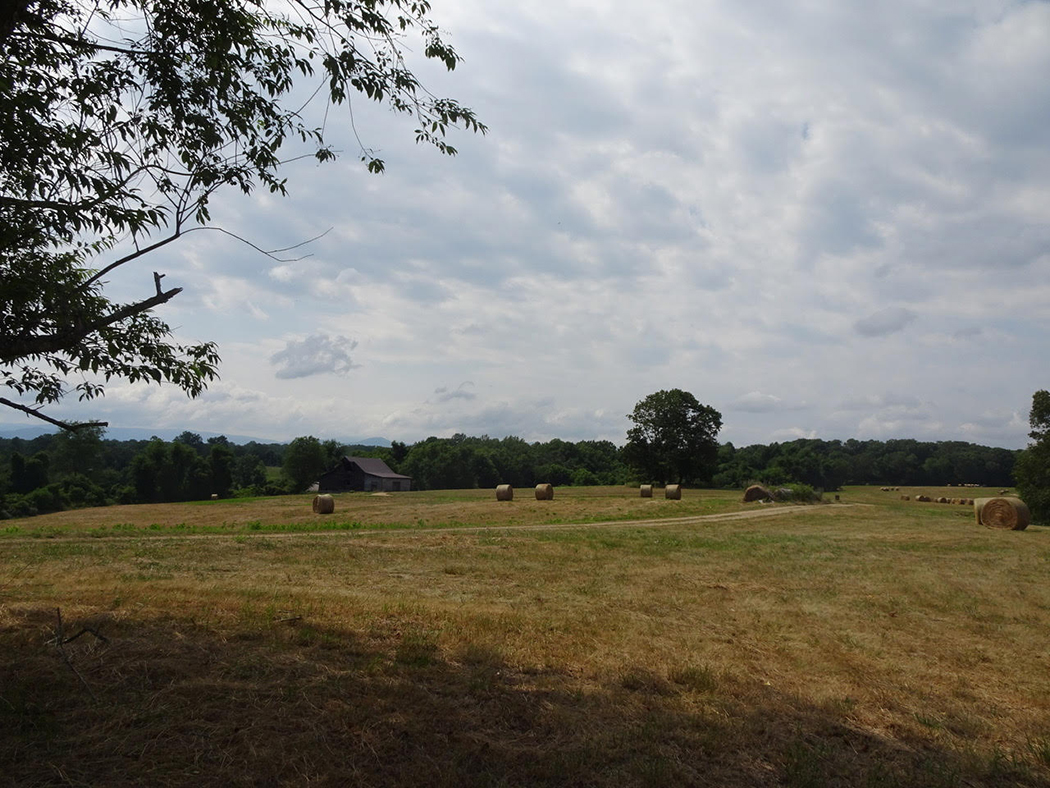In 2009, Dr. Latham Murray of Earlysville passed away at age 59 at his childhood home, Panorama Farms. His family decided to take care of the funeral themselves, building him a homemade coffin and burying him in their family cemetery. Without knowing it, they had given him a natural burial, free of toxic embalming chemicals, exotic wood caskets, concrete burial vaults, and other elements of traditional funerals known to harm the environment.
After performing more natural burials for their parents, Jean and James Murray, the next generation of Murrays now hopes to add a natural burial ground to their Albemarle farm, giving other members of the community the option to say good-bye to their loved ones in a greener way.
“This is a profoundly meaningful way to care for and respect the dead,” says Chris Murray. “This would be a wonderful thing for the community.”
During a green burial, the deceased are typically placed in a simple wicker or woven casket, or covered with cotton shroud or blanket, all of which are biodegradable and allow for natural decomposition. After they are lowered into the ground and buried under several feet of soil, their graves are marked with a flat stone marker or native plants, in lieu of concrete or plastic memorials. Some natural cemeteries even offer organic burial pods, which turn decaying bodies (or ashes) into trees.
“My parents were enthusiastic environmentalists. This is a way to maintain their legacy of environmental stewardship,” adds Murray, whose family has owned Panorama Farms for nearly 70 years.
According to the Green Burial Council, there are currently around 250 green cemeteries in the U.S., including three in Virginia. With the approval of the Albemarle County Board of Supervisors, Panorama Farms could become the first green cemetery in the Charlottesville area.
The 20-acre burial ground would also help raise revenue to sustain and preserve the family farm.
This is a profoundly meaningful way to care for and respect the dead.
Chris Murray
Natural burials have been the norm in Jewish and Muslim communities for thousands of years, and were common in the United States until the Civil War, when wealthy Northerners started paying for their deceased soldiers to be embalmed and shipped home. After he was assassinated in 1865, Abraham Lincoln was embalmed and paraded across the country, leading to the birth of the modern American funeral industry, reports the Smithsonian.
“We’re essentially going back to that principle in Judeo-Christian tradition, which is literally ‘dust to dust,’” explains Murray. “The current conventional funeral and burial practices, the body basically never turns to dust.”
Natural burials cut out dangerous embalming fluid—a known carcinogen. And they’re greener than cremation, which releases nearly 600 pounds of carbon dioxide into the air and can vaporize harmful metals from dental fillings or surgical implants. They also save money, costing an average of $2,000 to $3,000, compared to the average $9,000 traditional American funeral.
According to Murray, the board of supervisors has until March 2022 to rule on the special use permit application, but the family hopes to hear back by late summer.
“We love the idea—but it’s not a slam dunk until we actually get the special use permit,” says Murray.

